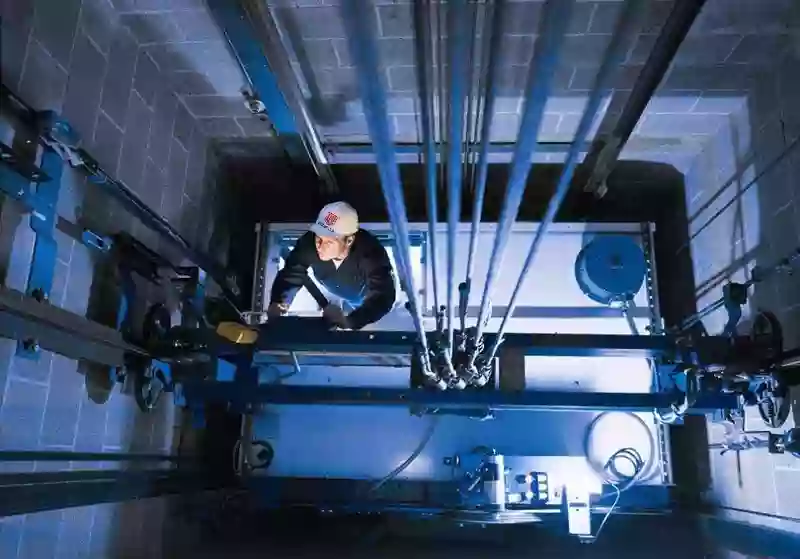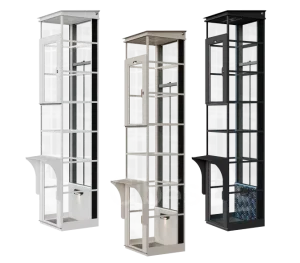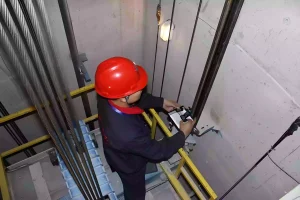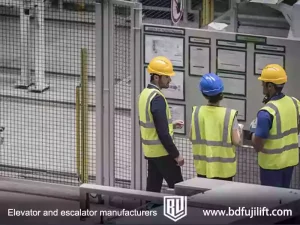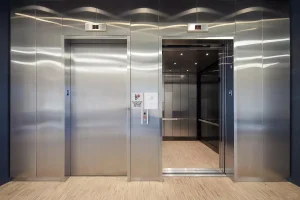Elevator installation is more than just a construction job. It’s an engineering process that blends architecture, mechanics, and safety. Done right, it transforms a building’s accessibility and value. Done poorly, it creates long-term headaches. In this guide, we’ll walk through the essential steps of What to Consider Before Installing an Elevator.
What to Consider Before Installing an Elevator
While elevators have become a standard part of modern buildings, most owners and developers don’t have the expertise to select, size, and install one themselves. That’s where professional guidance matters. Here is a summary of the key considerations before starting a new elevator installation.
Consult with Local Elevator Experts
Doing your own research is valuable, but we strongly recommend consulting with a trusted elevator installation professional. They can evaluate your building’s current structure, traffic patterns, design preferences, and budget. Licensed professionals can answer questions like what type of drive system is most suitable and explain how similar projects in your region have achieved efficiency and safety.
Get Installation Advice and Cost Estimates
After evaluating your project, an elevator specialist will provide recommendations and an installation cost estimate. This is where your own research comes in—ask about expected energy use, noise levels, ride comfort, and whether the model qualifies for energy efficiency incentives. Review the quote carefully and request a detailed breakdown if costs aren’t clear. A qualified supplier like BDFUJI can provide a range of models to fit your exact requirements.
How Long Does Elevator Installation Take?
Depending on the system, most typical passenger elevator installations are completed by experienced crews within several days to a few weeks. If the new system fits the existing shaft with minimal adjustments, installation can be faster. More complex projects, such as custom glass elevators or combined modernization work, will take longer.
Can I Install an Elevator Myself?
While you may be able to source equipment, installing an elevator is an entirely different matter. Unless you are a licensed, trained elevator technician, self-installation is not recommended for multiple reasons. Choosing the correct size requires engineering calculations of shaft loads and traffic needs. Improper installation can compromise safety and void warranties. In addition, electrical and safety regulations are strict, and compliance is essential. Attempting DIY installation risks costly mistakes and potential legal issues.
Professional Elevator Installation
Choosing professional installation for your new elevator is the best way to ensure reliable, safe, and efficient service for years to come. Certified technicians have the tools, training, and experience to deliver installation in line with local and international standards. Partnering with BDFUJI means you’ll also receive after-sales support, ensuring your system continues to operate at peak performance. installation.
Elevator Installation: Step-by-Step Tutorial
After making the necessary preparations for elevator installation, you can now move forward with the process itself. Here is a detailed step-by-step guide.
Step 1: On-Site Consultation and Assessment
A licensed elevator contractor visits the building to evaluate existing conditions. Measurements are taken for shaft width, depth, pit, and overhead clearance. The engineer also checks structural strength to ensure walls can support guide rails. If the current shaft is insufficient, adjustments or reinforcements are planned. This step avoids costly errors later.
Step 2: Removal of Old Equipment (if applicable)
For modernization projects, old machinery, rails, and wiring are removed carefully. Heavy components require special lifting tools, and electrical disconnections are handled by licensed technicians. Hazardous materials such as oils are disposed of in compliance with regulations. Protective coverings are used to prevent debris from damaging interiors during removal.
Step 3: Hoistway and Pit Preparation
The hoistway is built or reinforced according to engineering drawings. The pit is waterproofed to prevent corrosion, and the base is leveled. Overhead clearance is verified. Where required, a machine room or space for controllers is constructed. Using lightweight materials such as aluminum alloy structures can reduce civil works and speed installation.
Step 4: Installing the Elevator System
Guide rails are aligned and fixed with millimeter accuracy. The traction machine or hydraulic system is mounted, followed by counterweights and the elevator car frame. Electrical wiring, safety circuits, and the control cabinet are installed. High-quality control systems like the Monarch NICE 3000 LC-4007 improve reliability and simplify future maintenance.
Step 5: Testing, Commissioning, and Handover
The completed system undergoes rigorous testing. Load tests confirm rated capacity. Emergency features such as alarms, backup power, and fire recall are verified. Leveling accuracy is checked at each floor. Only after passing inspection is the system certified for use. Operators receive training on safe handling, and maintenance contracts are established. With BDFUJI’s global support network, clients continue to receive reliable service long after handover.
Why Work with a Professional Elevator Manufacturer?
Elevator installation is not where you cut corners. Expertise reduces risk, professional engineers foresee problems, and compliance with international standards guarantees safety. Most importantly, a well-installed elevator offers long-term return on investment. With BDFUJI, developers gain tailored solutions, global case experience, and reliable after-sales support.
Conclusion
Elevator installation is the heartbeat of a building’s vertical transportation system. From planning to testing, each step demands precision and expertise. When done properly, your elevator will serve safely and reliably for decades. An elevator isn’t just equipment—it’s the promise of smooth journeys, day after day. If you’re planning an elevator installation, contact BDFUJI for tailored solutions and a global portfolio of successful projects.
FAQ
Can an elevator be installed in an existing home?
Yes, many existing homes can have an elevator installed. The building needs to be checked for space and structure, but modern elevators can fit into most homes with some adjustments.
Is an elevator installed from the top or through the floor?
Elevators are usually installed from the bottom up, with parts assembled inside the shaft. Technicians often work through the floors to build and connect the elevator components.
Does a new elevator installation need a generator?
Most elevators do not need a separate generator, but having one can provide backup power during outages to keep the elevator running safely.
Is certification needed to install an elevator?
Yes, elevator installation must follow local safety codes and regulations. Certified professionals usually handle the installation to ensure it meets all legal requirements and safety standards.


